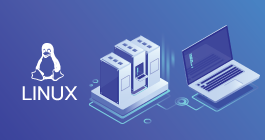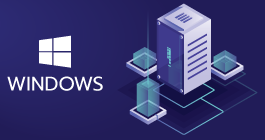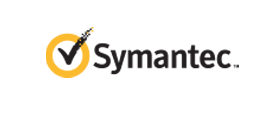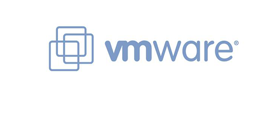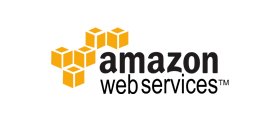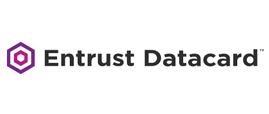-
Welcome to My Website
This is a text box. Write your own content here. This is an excellent place for you to add a paragraph.
Netway Support Center
เราพร้อมบริการคุณ ตลอด 24 ชั่วโมง
Payment & Invoices
Products Knowledge










Zendesk




Other Cloud Products
Technical Knowledge
Website/Install Application & FTP
Linux Technical Knowledge
Windows Technical Knowledge
Database
Blog list (8)
September 2023 - Netway Combo ข่าวสารรายเดือน ก.ย. 2023
Netway Combo - September 2023 เทคโนโลยีที่ SME ควรอัพเดท พร้อมโปรสำหรับคุณVMware HPE Enterprise - New infrastructure Updates (2023)https://shorturl.at/cyNO8ส่วนลดพิเศษ Linux / Windows VMware สูงสุด 40% https://shorturl.at/dxBG9Promo: ย้ายฟรีมาใช้ Microsoft 365 กับเราhttp://surl.li/khjtzสำหรับข้อมูลเพิ่มเติม หรือคำติชมใดๆ สามารถติดต่อ Netway Communication ได้ 24 ชม. 📲: 02 055 1095 📧: support@netway.co.th 👨💻Web chat: [[URL]]/ 💙Facebook Messenger: @netway.official https://www.facebook.com/netway.official 💚Add Line ID: @netway https://bit.ly/line-netway#techonogy #SME #promotion #microsoft365 #VMware
October 2023 - Netway Combo ข่าวสารรายเดือน ต.ค. 2023
👻Trick or Treat?🎃 ฮาโลวีน 2023 นี้ เราขอทรีทคุณด้วย #CyberSecurity เบื้องต้นเพื่อความปลอดภัยให้ธุรกิจ SME โตอย่างมั่นใจVMware HPE Enterprise - New infrastructure Updates (2023)https://shorturl.at/cyNO8 ส่วนลดพิเศษ Linux / Windows VMware สูงสุด 40% https://shorturl.at/dxBG9เช็ค 'ความเสี่ยงไซเบอร์' ที่หมกเม็ดในธุรกิจคุณ (2023)https://shorturl.at/nGHS85 เทคโนโลยีที่ช่วย SME เติบโตยิ่งขึ้น (2023)https://www.shorturl.asia/yldwxวิธีสังเกตโปรไฟล์ LinkedIn ของปลอมhttps://shorturl.at/hwCHTสำหรับข้อมูลเพิ่มเติม หรือคำติชมใดๆ สามารถติดต่อ Netway Communication ได้ 24 ชม. 📲: 02 055 1095 📧: support@netway.co.th 👨💻Web chat: [[URL]]/ 💙Facebook Messenger: @netway.official https://www.facebook.com/netway.official 💚Add Line ID: @netway https://bit.ly/line-netway#sme #technologytrend #linkedin #cybersecurityskeleton
9 Reasons to Use Airplane Mode Even If Youre Not Traveling
“9 เหตุผลในการใช้งาน Airplane Mode แม้ว่าคุณจะไม่ได้เดินทางก็ตาม” Airplane Mode ฟังก์ชั่นนี้คุณคงรู้จักดี และใช่งานตอนอยู่บนเครื่อง หรือในช่วงเวลาที่คุณไม่อยากให้คนมารบกวน แต่ใครจะรู้ว่า Airplane Mode ยังมีข้อดีอีกอย่างน้อย 9 ข้อ คือ1) ประหยัดอายุการใช้งานแบตเตอรี่อันมีค่า2) เพิ่มความเร็วในการชาร์จเเบตได้ประมาณ 4 เท่า 3) ปลีกวิเวกจากการแจ้งเตือนใดๆ 4) ตัดสิ่งรบกวน เพื่อจะโฟกัสเรื่องใดเรื่องหนึ่งได้จริงๆ 5) ป้องกันความผิดพลาดในการเผลอกด 6) ช่วยปลีกวิเวกได้จริงๆ 7) Digital Detox 8) หลีกเลี่ยงรังสีหรือสารเคมีที่เป็นพิษ 9) ช่วยประหยัดการใช้ข้อมูลและงบประมาณ ถ้าคุณสนใจข้อมูลใดๆ ที่อาจจะช่วยประหยัด หรือเพิ่มประสิทธิภาพให้ SME เรายินดีให้คำปรึกษาค่ะ สามารถติดต่อ Netway Communication ได้ตามช่องทางเหล่านี้ Contact Netway Communication (24x7) 📲: 02 055 1095 📧: support@netway.co.th 👨💻Web chat: [[URL]]/ 💙Facebook Messenger: @netway.official https://www.facebook.com/netway.official 💚Add Line ID: @netway https://bit.ly/line-netway#AirplaneMode #ProductivityBoost #WorkflowTips #TechBalance #DigitalDetox #TechTips9 Reasons to Use Airplane Mode Even If Youre Not Traveling Most people are familiar with their device’s Airplane Mode. You've probably used it when jetting off to exotic locations. But did you know that it's not just for globetrotters?That's right! Airplane Mode isn't only for flying; it can be a handy feature for your everyday life. Here are some top reasons why you should consider toggling it on, even if you're not traveling.1. Save That Precious Battery LifeWho doesn't want their smartphone battery to last longer? Airplane Mode can be your secret weapon against those battery-draining apps. The ones that are constantly running in the background.By switching on Airplane Mode, you effectively shut down all communication functions. This includes Wi-Fi, cellular data, and Bluetooth. This can be a lifesaver when you're running low on battery and need your phone to last until you can find a charger. 2. Boost Your Charging SpeedWe've all experienced those moments of panic when our phone's battery is about to die. We desperately need to charge it ASAP. Well, here's a neat trick: put your phone in Airplane Mode before plugging it in.Studies show that phones charge about 4 times faster in Airplane Mode. By doing this, your phone won't be wasting power on syncing notifications. Or checking for updates or connecting to networks. As a result, it will charge up faster, getting you back in the game in no time.3. A Tranquil Escape from NotificationsLife can get chaotic, and sometimes you need a break from constant pings. Turning on Airplane Mode grants you the gift of peace and tranquility, even if only for a little while. You can enjoy some quality "me" time. All without interruptions from social media alerts or work emails. It's like creating your little digital oasis! 4. Focus Mode: Engaged!We all struggle with staying focused from time to time. Whether it's work, studying, or a creative project, distractions are everywhere. Airplane Mode can be your go-to tool to combat those distractions. By cutting off the internet connection, you'll find it easier to concentrate on the task at hand. So, next time you need to get in the zone, remember to flip that Airplane Mode switch!5. Prevent Embarrassing MomentsPicture this: You're in an important meeting. Then suddenly your phone starts blaring an embarrassingly loud ringtone. Oops! And even if the ringer is off, phones often vibrate when getting a call or notification.Avoid these awkward moments. Use Airplane Mode in situations where silence is golden. You can still use your phone for notetaking or accessing offline content. But without any fear of accidental disruptions.6. Roaming Woes, Be Gone!When you're in an area with poor cellular reception, what happens to your phone? It might tirelessly search for a signal. This can lead to battery drain. Airplane Mode can be a lifesaver in such situations.By turning it on, you prevent your phone from endlessly searching for a network. This saves precious battery power. It can also keep you from connecting to a dangerous network.7. A Digital DetoxSometimes we all need a break from the digital world. It can be to reconnect with loved ones, enjoy outdoor activities, or simply be present in the moment. Airplane Mode lets you temporarily disconnect from the online realm. But you still have access to your phone's offline features.8. Avoid Unwanted RadiationThe jury is still out on any health risks of mobile phone radiation. But some people prefer to err on the side of caution. Enabling Airplane Mode reduces your phone's radiation emission. This is because it disables most of the communication features. If you're concerned about exposure, using Airplane Mode can provide some peace of mind.9. Save Data and MoneyIf you're on a limited data plan, turning on Airplane Mode can help you manage your data usage. As well as avoiding unexpected charges. It's a smart move. Especially when you're nearing the end of your billing cycle and don't want to exceed your data limit.Remember, Airplane Mode isn't just for frequent flyers. It's a nifty feature that can enhance your daily life in various ways. It offers longer battery life and faster charging. As well as escaping the constant barrage of notifications, it has benefits. Airplane Mode can be your digital ally in a world that's always connected.So, don't be shy to give it a try, and enjoy this underrated smartphone feature. Even when your feet are firmly on the ground!Keep Your Smartphone Optimized & SecureDo you need help securing your smartphone from viruses and attacks? Wish you knew how to use all its features better? Our team of experts can help with training and device security.Article used with permission from The Technology Press.
Does Your Business Have Any Cybersecurity Skeletons in the Closet
“เช็ค 'ความเสี่ยงไซเบอร์' ที่หมกเม็ดในธุรกิจคุณ (2023)”✅ มีโอกาสที่ดีที่ธุรกิจของคุณอาจมีโครงสร้างความปลอดภัยทางไซเบอร์ที่ซ่อนอยู่✅ ถึงเวลาที่จะฉายแสงให้กับอันตรายที่ซ่อนอยู่เหล่านี้แล้ว✅ คุณสามารถดำเนินการปกป้องธุรกิจของคุณจากภัยคุกคามทางไซเบอร์ที่อาจเกิดขึ้นได้ต่อไปนี้คือปัญหาด้านความปลอดภัยทางไซเบอร์ที่พบบ่อยที่สุดที่ SMB ต้องเผชิญ❗ซอฟต์แวร์ล้าสมัย: ฝันร้ายที่ปกคลุมไปด้วยใยแมงมุม❗รหัสผ่านที่อ่อนแอ: กุญแจโครงกระดูกสำหรับอาชญากรไซเบอร์❗Wi-Fi ที่ไม่ปลอดภัย: ประตูผี❗ขาดการฝึกอบรมพนักงาน: ความไม่รู้ที่หลอกหลอน❗ไม่มีการสำรองข้อมูล: หายนะที่เป็นความลับ❗ไม่มีการตรวจสอบสิทธิ์แบบหลายปัจจัย: The Ghoulish Gamble❗ไม่สนใจความปลอดภัยบนมือถือ: โทรศัพท์ผีสิง❗Shadow IT: ความประหลาดใจที่น่าขนลุก❗แผนเผชิญเหตุ: ปลดปล่อยความสยองขวัญต้องการ “มือปราบภัยคุกคาม” เพื่อปรับปรุงความปลอดภัยทางไซเบอร์ของคุณหรือไม่❓อย่าปล่อยให้ธุรกิจของคุณถูกคุกคามโดยภัยคุกคามที่อาจเกิดขึ้นหากคุณสนใจ สามารถติดต่อเราได้ตามช่องทางเหล่านี้Contact Netway Communication (24x7) 📲: 02 055 1095 📧: support@netway.co.th 👨💻Web chat: [[URL]]/ 💙Facebook Messenger: @netway.official https://www.facebook.com/netway.official 💚Add Line ID: @netway https://bit.ly/line-netway#CybersecurityCheck #ProtectYourBusiness #BeCyberSmart #StaySecure #CyberSafetyFirst #CybersecurityDoes Your Business Have Any Cybersecurity Skeletons in the Closet Let’s dive into a topic that might give you the chills—cybersecurity skeletons in the closet. You may not have old skeletons hidden away in the basement. But there’s a good chance of cybersecurity vulnerabilities lurking in the shadows. Just waiting to wreak havoc. Let's get started uncovering threats that could leave your business in danger. Here are some of the most common cybersecurity issues faced by SMBs.Outdated Software: The Cobweb-Covered NightmareWe get it; updating software can be a hassle. But running outdated software is like inviting hackers to your virtual Halloween party.When software vendors release updates, they often include crucial security patches. These patches fix vulnerabilities that hackers can exploit. So, don't let outdated software haunt your business. Keep everything up to date to ensure your digital fortress is secure.Weak Passwords: The Skeleton Key for CybercriminalsIf your passwords are weak, you might as well be handing out your office keys to cyber criminals. Using "123456" or "password" as your login credentials is a big no-no. Instead, create strong and unique passwords for all accounts and devices. Consider using a mix of upper and lowercase letters, numbers, and special characters. Password managers can be a lifesaver for generating and storing complex passwords securely.As a business owner, you can’t expect your employees to do this naturally. Provide them with requirements for creating passwords. You can also set up software to force strong password creation.Unsecured Wi-Fi: The Ghostly GatewayPicture this: a cybercriminal sitting in a parked car. He’s snooping on your business's unsecured Wi-Fi network. Scary, right? Unsecured Wi-Fi can be a ghostly gateway for hackers to intercept sensitive data.Ensure your Wi-Fi is password-protected. Make sure your router uses WPA2 or WPA3 encryption for an added layer of security. For critical business tasks consider a virtual private network (VPN). It can shield your data from prying eyes. Lack of Employee Training: The Haunting IgnoranceYour employees can be your business's strongest line of defense or its weakest link. Employee error is the cause of approximately 88% of all data breaches.Without proper cybersecurity training, your staff might unknowingly fall victim to phishing scams. Or inadvertently expose sensitive information. Regularly educate your team about cybersecurity best practices.Such as: • Recognizing phishing emails • Avoiding suspicious websites 10 • Using secure file-sharing methodsNo Data Backups: The Cryptic CatastropheImagine waking up to find your business's data gone, vanished into the digital abyss. Without backups, this nightmare can become a reality. Data loss can be due to hardware failures or ransomware attacks. As well as many other unforeseen disasters.Embrace the 3-2-1 rule. Have at least three copies of your data, stored on two different media types. With one copy stored securely offsite. Regularly test your backups to ensure they are functional and reliable.No Multi-Factor Authentication (MFA): The Ghoulish GambleUsing only a password to protect your accounts is asking for trouble. It’s like having nothing but a screen door at the entrance of your business.Adding MFA provides an extra layer of protection. It requires users to provide extra authentication factors. Such as a one-time code or passkey. This makes it much harder for cyber attackers to breach your accounts. Disregarding Mobile Security: The Haunted PhonesMobile devices have become office workhorses. But they can also be haunted by security risks. Ensure that all company-issued devices have passcodes or biometric locks enabled. Consider implementing mobile device management (MDM) solutions. These will enable you to enforce security policies. As well as remotely wipe data and ensure devices stay up to date.Shadow IT: The Spooky SurpriseShadow IT refers to the use of unauthorized applications within your business. It might seem harmless when employees use convenient tools they find online. But these unvetted applications can pose serious security risks.Put in place a clear policy for the use of software and services within your business. Regularly audit your systems to uncover any shadow IT lurking under cover.Incident Response Plan: The Horror UnleashedEven with all precautions in place, security incidents can still happen. Without an incident response plan, an attack can leave your business scrambling. Develop a comprehensive incident response plan. It should outline key items. Such as how your team will detect, respond to, and recover from security incidents. Regularly test and update the plan to ensure its effectiveness.Need Some “Threat Busters” to Improve Your Cybersecurity?Don't let cybersecurity skeletons in the closet haunt your business. We can help you find and fix potential vulnerabilities. As well as create a robust security posture that protects your business.Article used with permission from The Technology Press.
Cybersecurity Awareness Month
“เดือนแห่งความตระหนักรู้ด้านความปลอดภัยทางไซเบอร์ (Oct 2023)”✅ ในขณะที่เทคโนโลยีก้าวหน้าอย่างต่อเนื่อง ความจำเป็นในการตระหนักรู้ที่เพิ่มมากขึ้นก็เช่นกัน✅ ตุลาคมเป็นเดือนแห่งการตระหนักรู้ด้านความปลอดภัยทางไซเบอร์ (CAM)✅ ทำหน้าที่เป็นเครื่องเตือนใจในเวลาที่เหมาะสมว่ามีหลายวิธีในการปกป้องข้อมูล📌ในปีนี้ CAM มุ่งเน้นไปที่หลักปฏิบัติที่ดีที่สุด 4 ประการด้านความปลอดภัยทางไซเบอร์✅ การเปิดใช้งานการรับรองความถูกต้องแบบหลายปัจจัย✅ การใช้รหัสผ่านที่รัดกุมและตัวจัดการรหัสผ่าน✅ กำลังอัปเดตซอฟต์แวร์✅ การรับรู้และการรายงานฟิชชิ่งเราช่วยคุณนำแนวทางปฏิบัติด้านสุขอนามัยทางไซเบอร์ที่ดีที่สุดมาใช้ได้CAM มอบโอกาสอันมีค่าในการมุ่งเน้นไปที่ความสำคัญของความปลอดภัยทางไซเบอร์อีกครั้ง❓หากคุณสนใจการความช่วยเหลือเพื่อให้มั่นใจถึงอนาคตที่ปลอดภัยและยืดหยุ่นมากขึ้นสามารถติดต่อเราได้ตามช่องทางเหล่านี้Contact Netway Communication (24x7) 📲: 02 055 1095 📧: support@netway.co.th 👨💻Web chat: [[URL]]/ 💙Facebook Messenger: @netway.official https://www.facebook.com/netway.official 💚Add Line ID: @netway https://bit.ly/line-netway#Cybersecurity #BeCyberSmart #OnlineSecurity #CybersecurityAwarenessMonthCybersecurity Awareness Month As technology continues to advance, so does the need for heightened awareness. As well as proactive measures to safeguard sensitive information.Cybersecurity can seem like an insurmountable task for everyday people. But it’s not only a job for the IT team. Everyone can play a part in keeping their organization’s data safe. Not to mention their own data.October is Cybersecurity Awareness Month. It serves as a timely reminder that there are many ways to safeguard data. Following the basics can make a big difference in how secure your network remains. What Is Cybersecurity Awareness Month? Cybersecurity Awareness Month (CAM) is an annual initiative held every October. It promotes cybersecurity awareness and education. It aims to empower individuals and organizations by giving them knowledge and resources. It helps people strengthen their defenses against cyber threats.CAM started as a U.S. initiative, National Cybersecurity Awareness Month. Then, it quickly spread around the globe. It’s led by two agencies: • National Cyber Security Alliance (NCSA) • Cybersecurity and Infrastructure Security Agency (CISA) This collaborative effort involves various stakeholders. Government agencies, industry leaders, and cybersecurity experts all come together. The goal is to raise awareness about cyber risks and best practices.This Year’s ThemeThis is CAM’s 20th year. To celebrate, the theme revolves around looking at how far cybersecurity has come. As well as how far it has to go. This year, CAM focuses on four key best practices of cybersecurity.These are: • Enabling multi-factor authentication • Using strong passwords and a password manager • Updating software • Recognizing and reporting phishing Let’s take a closer look at these four best practices of good cyber hygiene.Essential Cyber Hygiene: 4 Keys to a Strong DefenseCentral to Cybersecurity Awareness Month is the promotion of essential cyber hygiene practices. We follow good hygiene to maintain physical health. For example, we brush our teeth every day.Cybersecurity also requires ongoing good hygiene practices to secure the online environment. These practices form the foundation of a strong cybersecurity defense. They help both individuals and organizations. Enabling Multi-Factor Authentication (MFA)Implementing Multi-Factor Authentication (MFA) adds a vital layer of security to all logins. In most cases, a hacker can't breach an account protected by MFA. This is the case even if the cyber crook has the password.According to Microsoft, MFA can block 99.9% of attempted account compromise attacks. With that strong track record, everyone really should be using it. And using it on every login they have.Strong Passwords & a Password ManagerPasswords remain a critical aspect of securing online accounts. Despite the increased use of biometrics, passwords still rule. Encourage your team members to use strong, unique passwords for each account. Avoid easily guessable information like birthdays or names.Companies can help by setting strong password enforcement rules. This requires a strong password before it’s accepted in a system. For example, you may set up a policy that requires a password to have:• At least 12 characters • At least 1 upper case letter • At least 1 lower case letter • At least 1 number • At least 1 symbolUpdating SoftwareOutdated software creates vulnerabilities that cybercriminals can exploit. Regularly update operating systems, applications, and firmware. This ensures the latest security patches are in place.Automating updates is a good way to ensure they’re done promptly. Companies can use endpoint device managers to handle updates across all employee devices. Managers like Intune simplify the process and enhance endpoint security.Recognizing and Reporting PhishingPhishing attacks are a common vector for cyber threats. Train your team to identify phishing emails, suspicious links, and unsolicited attachments. Encourage them to verify the sender's email address. As well as never provide sensitive information unless certain of the recipient's authenticity.It’s also important to educate employees about phishing beyond email. Phishing via text messages has been increasing significantly. Some criminals phish via direct messages on social media platforms.Another important aspect of phishing awareness is to report phishing. If it’s reported, then other employees know to avoid that phishing trap. The organization’s IT team also needs to know so they can take action to mitigate the threat. Be sure to let employees know how they can report a phishing email when they suspect one.We Can Help You Put the Best Cyber Hygiene Practices in PlaceCAM offers a valuable opportunity to refocus on the significance of cybersecurity. As well as prioritizing essential cyber hygiene practices. Building a culture of cybersecurity awareness within your team is important. It can be the difference between vulnerability and resilience.Need some help ensuring a more secure and resilient future? Our team of experts can get you going on the basics. Once those are in place, your organization will be more productive and much more secure.Article used with permission from The Technology Press.
-
Domain
-
Hosting
-
Cloud & Managed
-
SSL
-
Email
- เรียนรู้เพิ่มเติม
- Microsoft 365 รุ่นต่างๆ
- Microsoft 365 สำหรับธุรกิจ
- Microsoft 365 สำหรับใช้งานที่บ้าน
- ทดลองฟรี
- G Suite
- เทคนิคลดต้นทุนอีเมล Microsoft 365 มากกว่า 28%
- เทคนิคลดต้นทุนอีเมล G Suite มากกว่า 19%
- Zimbra-Based Email
- Traditional Email by cPanel
- Physical to Cloud Migration
- Exchange Server to Microsoft 365 Migration
- G Suite to Microsoft 365 Migration
- Microsoft 365 to G Suite Migration
- Cloud to Cloud Migration
-
Microsoft
-
Google
-
Marketing
-
Others
-
Blog
-
Microsoft Teams
-
microsoft-365-business-premium
-
test-slide
-
Order
-
Promo
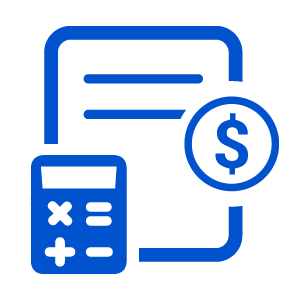







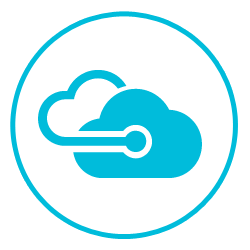













.png)



.png)

